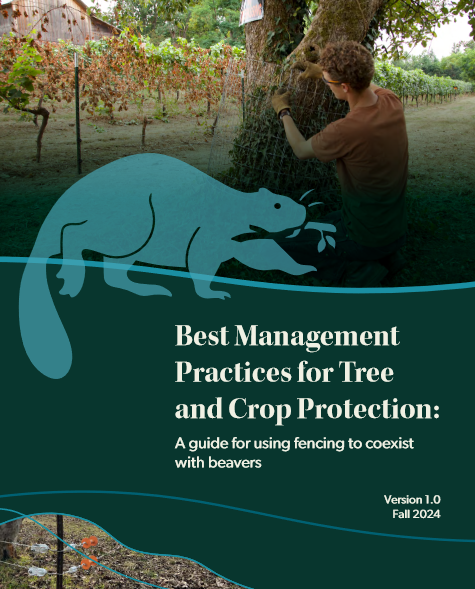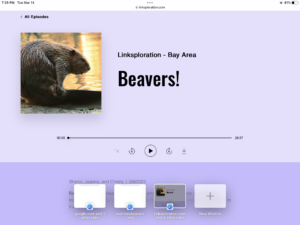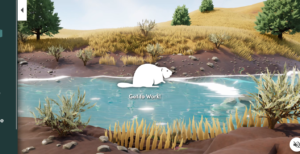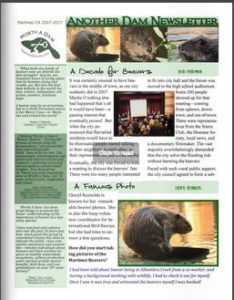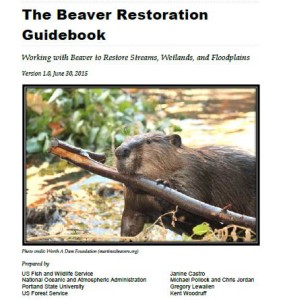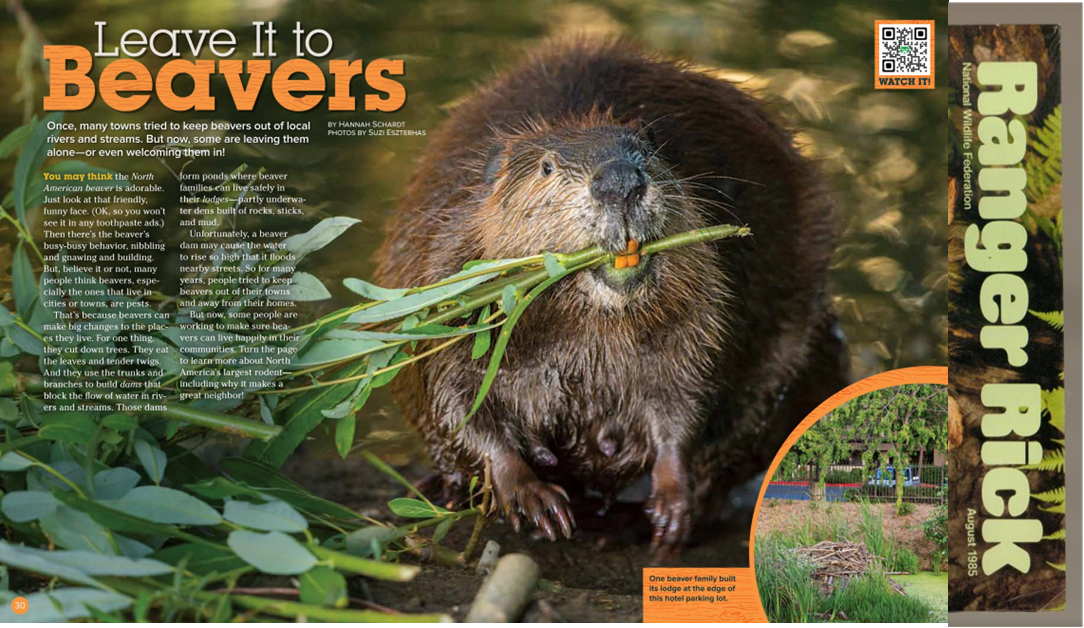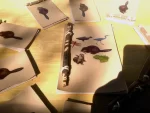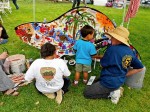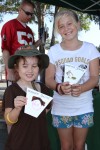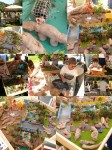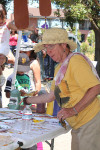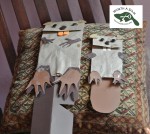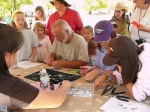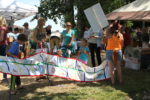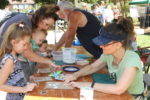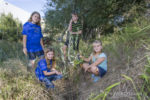My goodness. They say when it rains it pour and boy-oh-boy they ain’t kidding, Yesterday a new Ben-terview dropped and the National Wildlife Federation posted another story about the Clark-fork coalition. I’m spoiled for choice, so I choose this. Almost entirely good news except for that one stupid part. See if you can spot it. Grr.
Good PR for Beavers
A pilot project in western Montana shows how people and beavers can coexist
 Beaver dams hold water and recharge aquifers. They slow down water in small streams, which in turn reduces erosion, improves water quality, and helps expand riparian areas. Their ponds create diverse habitat to support fish, birds, amphibians, and mammals. As Montana and the West face a hotter and drier future, more beavers on our landscapes may be just what we need.
Beaver dams hold water and recharge aquifers. They slow down water in small streams, which in turn reduces erosion, improves water quality, and helps expand riparian areas. Their ponds create diverse habitat to support fish, birds, amphibians, and mammals. As Montana and the West face a hotter and drier future, more beavers on our landscapes may be just what we need.
But beavers have a bad reputation for creating some problems for humans. Beavers mean trouble if they damage or cut down valuable landscape trees. If they dam culverts the resulting impounded waters can wash out a road, and if they block irrigation ditches the water can flood a farmer’s fields. What happens next is usually not good for the beavers, but trapping and killing nuisance beavers seldom provides permanent nor useful solutions. That’s why we believe there’s a better way.
The National Wildlife Federation and its partners, the Clark Fork Coalition and Defenders of Wildlife, recently launched a 6-month pilot project to test and demonstrate techniques that allow beavers to stay on the landscape while simultaneously solving the problems they can cause.
Oh this sounds good. Letting beaver stay on the landscape using actual techniques that solve the problem! I’m all ears!
The pilot project is run by Elissa Chott. As the new Beaver Technician at the Clark Fork Coalition, she brings years of experience addressing conflicts between bears and people. Elissa’s job is to find places where beavers are causing problems within the Clark Fork River Basin in western Montana. She works with landowners, county road crews, state parks and wildlife managers, and conservation partners to show how beaver damage can be minimized by installing a few simple devices.
Starting with one of the most basic nuisances that beavers are known for, the project aims to address the problem of beavers chewing through trees that provide a host of benefits to the land and communities. One solution is to wrap the trees with cylinders of heavy wire that beavers can’t chew through. This protects the trees and beavers turn to other vegetation for their food and building supplies.

Example of tree wrapping. Photo by Jay Sturger
Another common problem occurs when beavers dam a culvert, and the rising water floods or washes out a road. A solution to this is constructing a fence that prevents beavers from accessing the culvert; one version of this approach bears the trademarked name “Beaver Deceiver.” Beavers try to build dams wherever they sense running water, but if they can be kept far away from that stimulus, they don’t bother. A 40-50 foot-long fence constructed in front of a culvert’s upstream opening does the trick. The fence is shaped like a trapezoid, so even if beavers try to dam the fence near the culvert, the shape of the fence forces them further and further away from the sound of the water, until eventually they give up.
Elissa! Excellent to meet you! I can’t think of a more valuable resource than a beaver technician that teaches folks to solve problems! Except this makes me really queasy.
Beyond in-stream structures, researchers from Utah have been experimenting with simple white sheets or flags erected at a culvert to deter beavers. One enterprising Gallatin Valley farm family has even used an inflatable “scary clown” at a bridge where their otherwise-welcome beavers were blocking water and flooding their road. (“When the Beavers Met Bozo” is an amusing photo story, if not a definitive guide to controlling beaver activity.)
In addition to trying proven techniques that work, we thought we’d try made up ridiculous efforts that just look like we’re trying! I mean that 25,000 from USDA doesn’t last forever.
Seriously? Seriously? Just. Stop. It.
In addition to causing problems at manmade “pinch points” such as culverts and bridges, beaver ponds can overflow into farm fields or flood roads and other developed areas. In these cases, a device called a pond leveler can help. Pond levelers act like the overflow drain in a sink. A flexible pipe, submerged in the beaver pond drains the backed-up water to a desired height. The water is released on the downstream side of the beaver dam. The pipe’s intake is surrounded by a cylinder of wire fencing that keeps the beavers too far away to hear the water flowing into it, so they don’t try to fix the “leak.”

Here in Montana, Elissa Chott finds that, “Most landowners I’ve talked to are willing to live with beavers as long as they don’t cause a lot of damage or flooding.” Perhaps the chances are good that beavers will also become more accepted as ways to coexist are better understood.
Well that’s better. NO SHEETS, Why on earth do people think that something that frightens beavers for part of a single night is going to STOP them from doing work on their most important work every other night that follows?
If I live to be a thousand years old I will always, always HATE THE SHEET.
Now you’re all invited to a lovely audio Ben-terview which actually had some different kinds of questions. The audio’s not the best, but we learn the exciting tidbit that Ben recently got a dog, aptly named “Kit”. Awwww.
 The vital role of beavers in enriching and strengthening our ecosystems (Interview with Ben Goldfarb of Eager)
The vital role of beavers in enriching and strengthening our ecosystems (Interview with Ben Goldfarb of Eager)
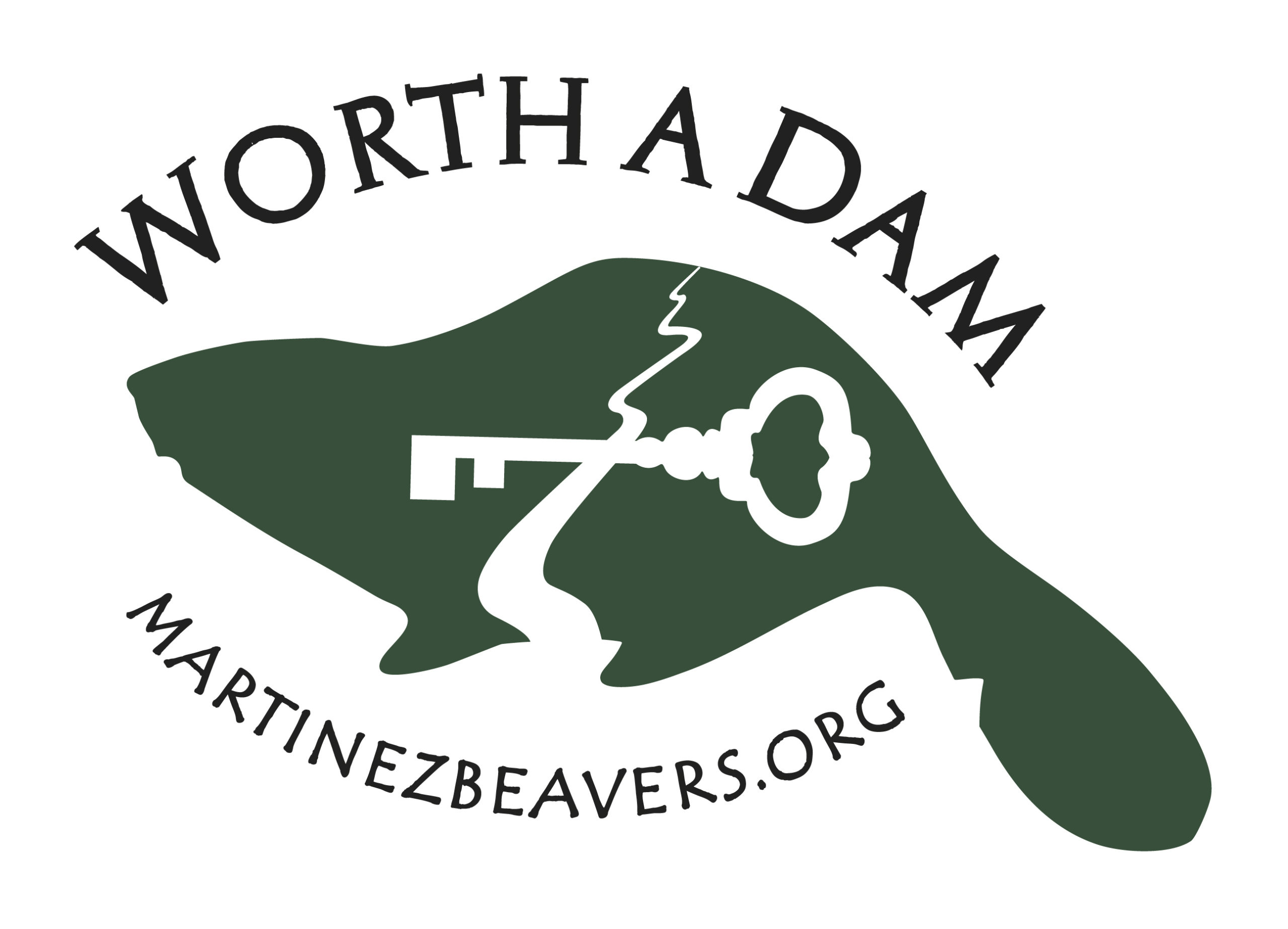


 Thought to be only freshwater animals, Greg Hood discovered beavers were using the tidal shrub zone. These wetlands were among the first to be diked, drained and filled nearly out of existence in Puget Sound country as the region developed. But a place that is just terrific habitat for tidal beavers. Not a new species, but rather beavers making their living in a place where people did not expect them.
Thought to be only freshwater animals, Greg Hood discovered beavers were using the tidal shrub zone. These wetlands were among the first to be diked, drained and filled nearly out of existence in Puget Sound country as the region developed. But a place that is just terrific habitat for tidal beavers. Not a new species, but rather beavers making their living in a place where people did not expect them.



 This time will be especially fun because in addition to Cheryl bringing her mother to the audience that day, my own mother will be there. (First time she had to listen to the beaver story in 13 years so I hope it goes okay!) It will be at the swanky state-of-the art Peacock theater there, and then be broadcast on their closed circuit TV for people who are bed ridden or can’t make can learn about beavers. Of course I never turn down the offer to talk about our flat-tailed friends when there’s an expert tech waiting in the wings to make things flow smoothly.
This time will be especially fun because in addition to Cheryl bringing her mother to the audience that day, my own mother will be there. (First time she had to listen to the beaver story in 13 years so I hope it goes okay!) It will be at the swanky state-of-the art Peacock theater there, and then be broadcast on their closed circuit TV for people who are bed ridden or can’t make can learn about beavers. Of course I never turn down the offer to talk about our flat-tailed friends when there’s an expert tech waiting in the wings to make things flow smoothly.




